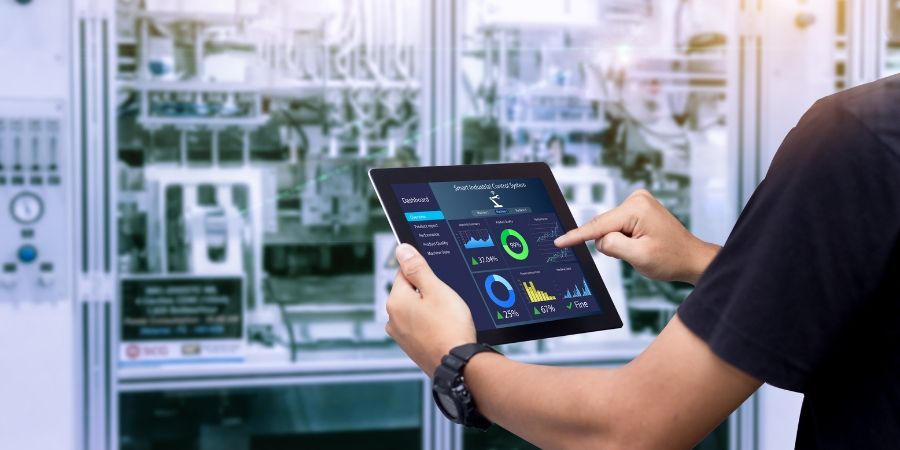
Forbes estimates that the industrial internet of things (IIoT) market will continue growing at an impressive 40% increase per year until the market hits $12.4 billion in 2024. The internet of things brings together the physical and digital worlds to transform manufacturing. From IoT-enabled elevators to connected refrigerated shipping containers, just about every device, legacy machine, or piece of equipment in every area of business can be made into a smart connected version. The IIoT enables efficient connected equipment that can unlock major value at your organization through untapped streams of data.
The internet of things (IoT) could be used to refer to any and every device that connects to the internet, although usually when referring to the IoT, we mean devices that communicate with each other directly or via the same dedicated network. The IoT connects people, processes, and things to securely view, share and activate information among them.
The industrial internet of things (IIoT) enables you to access, analyze, act upon, and monetize the data that seamlessly flows between your connected devices, assets, IT and OT systems across your enterprise. The IIoT is centered primarily around machine learning, big data and machine-to-machine communication within the industrial sphere.
The IIoT integrates all parts of the business using sensors to capture machine performance data, sharing this between devices and machines to streamline key processes. The information is transmitted to a central platform for analysis, which helps to close the gap between management and the factory floor, offering visibility over all systems and processes. Ultimately, this should lead to more informed and effective decision-making.
Streamlined operations, increased profitability and customer satisfaction hinges on the availability of reliable, complete, accurate and up-to-the-minute device data collected across the enterprise. While the IIoT provides the digital infrastructure to move data to where it needs to be, the quality of the data itself is what matters.
In many cases, this data is used to assess the health and performance of each device. Trends in performance data can call out pain points and bottlenecks within business-critical processes. Subtle changes in machine data may alert maintenance teams to the wear and tear of certain parts or provide an early warning system that an item of equipment is heading for a breakdown. Stepping in to fix these problems in time can save companies a fortune in downtime and the lost earnings or missed orders that result from this.
While the IIoT opens many new opportunities for businesses, it may pose a few obstacles. First and foremost is the problem of IIoT data storage. When every device in your building is generating these enormous amounts of information, where do you store it? Especially when the appeal of an IIoT network is connectedness – how do you ensure that everyone in your team can get to what they need? Fortunately, a cloud-based platform, will minimize the pressure on your hardware and keep your offline storage requirements to a minimum.
Today’s future-focused factory is about filling data gaps and optimizing factory productivity; however, not all legacy machines were initially built to gather and integrate data into an IoT platform. Some machines may even have security features built in to prevent data collection.
These can fortunately be overcome through a coherent, effective strategy described in this white paper, so that you can still collect, transmits, synthesize and analyze your valuable data to discover key insights. Discover these best practices, so you can maximize your ROI while continuing to use your legacy equipment.

Leah Gourley is a Digital Content Marketing Specialist based out of PTC's Boston office. She enjoys creating and sharing content surrounding the latest technologies that are transforming industries, including augmented reality and the industrial internet of things.
©Copyright 2025. All rights reserved by Modelcam Technologies Private Limited PUNE.